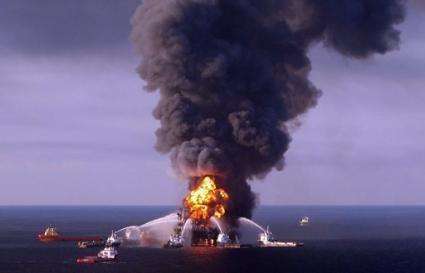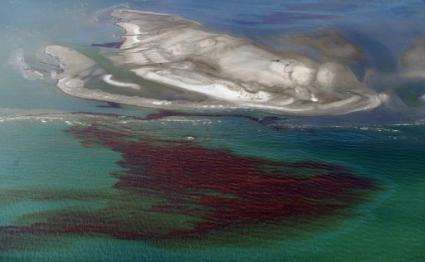BP could have prevented blowout: investigator

BP's oil well in the Gulf of Mexico might never have blown last year if the company's engineers had been consulted about a key test that pointed to a defective cement job, investigators reported Thursday.
Those and other details were disclosed in a report wrapping up an investigation by a presidential commission that blamed the April 20, 2010 disaster on management failures by BP, Halliburton and Transocean.
A massive explosion on the BP-leased Deepwater Horizon rig killed 11 workers, sank the rig and sent millions of barrels of oil flowing into the Gulf over a three month period, wreaking havoc on the region's environment and economy.
The report by the commission's lead counsel, Fred Bartlit, zeroed in on the failure of the cement well casing put in by Halliburton and a key negative pressure test just before the blowout that should have warned BP supervisors of a problem.
But investigators found that "well site leaders accepted facially implausible explanations for the negative test results."
Even after the blowout of the Macondo well, a BP official attributed it to "a bladder effect," rather than failed cement, surprising BP's vice president for drilling and completions, who was on the rig during the test.
"If anyone had consulted him or any other shore-based engineer, the blowout might never have happened," Bartlit's report said.
"Every industry expert the investigative team met with dismissed the so-called bladder effect as a fiction that could not have accounted for the pressure readings the men saw on April 20."

The report also said that BP officials had been aware for years of problems with Halliburton's work and the quality of the oil services giant's personnel.
"BP’s engineers had been forced to 'work around' the Halliburton engineer assigned to Macondo for years -- they said that he was 'not cutting it' and that he often waited too long to conduct critical tests.
"But they neither reviewed his work at Macondo carefully, nor even checked to see that he conducted testing in a timely manner -- even though they knew that their last minute changes to the cement design test could cause problems and that using nitrogen foamed cement could pose 'significant stability challenges.'"
Nor did they fully review his cement design, the report said.
An internal BP cement specialist was asked to provide support on an ad hoc basis, but he left the country without carefully reviewing the cement design, and never saw information about the cement slurry design or the lab test results until six days after the disaster.
"When he reviewed those materials, several aspects of Halliburton’s cement design surprised him," it said.

The Transocean crew also missed several signs that there were hydrocarbons on the night of the blowout.
"At 9:27 pm, less than 15 minutes before the blowout began, they did notice an anomaly in pressure data from the well, and shut down operations to investigate," the report said.
"They noticed several anomalies that should have caused serious concern, but showed no hint of alarm," it said.
The rig's crew activated a blowout preventer seconds before the blowout began. But by then it was too late, the report said.
"Even if the BOP (blowout preventer) had functioned flawlessly, the rig would have exploded and 11 men would have died," it said.
(c) 2011 AFP




















